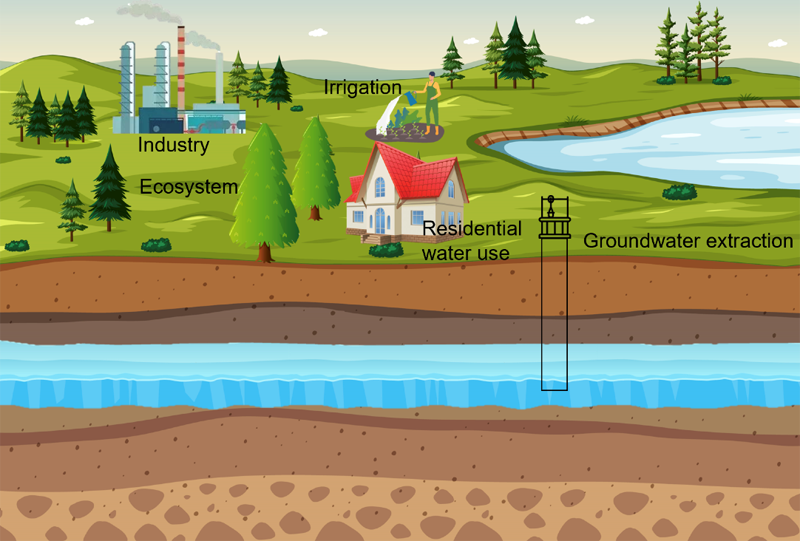The rapid development of agriculture and industry in Beijing-Tianjin-Hebei region leads to the increase in water demand. Based on the China Water Resources Bulletin, groundwater accounted for 61%, 26% and 80% of the total water supply in Beijing, Tianjin, and Hebei in 2009, respectively. Excessive groundwater extraction often results in the water depletion that may affect ecological and hydrological processes.
Recently, a collaborative research team led by the Institute of Atmospheric Physics at the Chinese Academy of Sciences investigated the effects of groundwater extraction on hydrological process and energy cycle in Beijing-Tianjin-Hebei by high resolution simulations. Groundwater depletion can be detected using the in-situ observations, Gravity Recovery and Climate Experiment data, and simulations.
"Human groundwater extraction deepened the groundwater table depth between 2000 and 2012 across the plains in front of Taihang Mountain." said Prof. JIA Binghao, the corresponding author of the study
published in Journal of Hydrology, "Groundwater extraction used for irrigation changed the water and energy budgets, leading to a significant increasing of latent heat flux within the growing season." Diagram of groundwater extraction. (Image by Dr. WANG Longhuan)
According to this study, groundwater extraction rapidly reduced terrestrial water storage (TWS, exceeding 24 cm per unit area) from 2000 to 2012. TWS changes in 52% of urbanized areas are dominated by groundwater extraction, and 20% of urbanized areas are dominated by evapotranspiration.
"The model in this study can be used for other groundwater extraction hotspots around the world, such as Europe, southern Iran, central United States, northern India, and Pakistan to study the impact of human water use," said Prof. XIE Zhenghui, one of the authors of the study.
Citation:
Wang, L., Jia, B.*, Xie, Z., Wang, B., Liu, S., Li, R., Liu, B., Wang, Y., Chen, S. Impact of groundwater extraction on hydrological process over the Beijing-Tianjin-Hebei region, China. Journal of Hydrology, 2022, 609, 127689. https://doi.org/10.1016/j.jhydrol.2022.127689.
Media contact: Ms. LIN Zheng, jennylin@mail.iap.ac.cn

